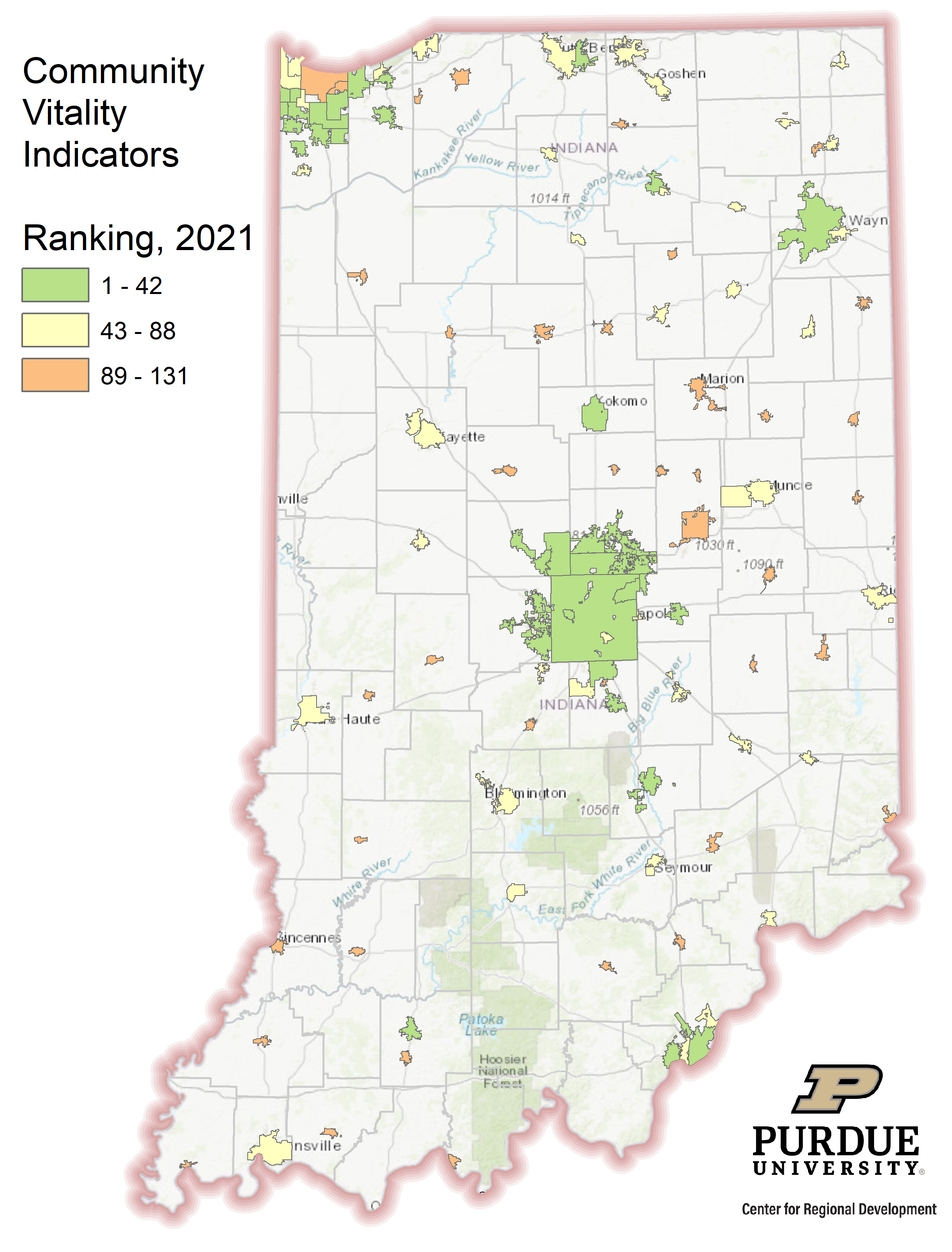Overview
The Indiana Office of Community and Rural Affairs (OCRA) is now employing the Community Vitality Indicators (or CVI) as a way of assessing how well cities/towns in the state are doing on a core set of metrics. Taken together, these variables are intended to provide cities/towns with a snapshot of how they stack up relative to other cities/towns in the state. By tracking these measures over time, cities/towns are able to determine the degree to which they are achieving positive improvements on one or more of these key measures.
At present, CVI is composed of seven variables. They are:
- Population
- Public School Enrollment as a % of Population Under 18 Years of age
- Percent Population with Associate Degree or Higher
- Per Capita Personal Income
- Population Change (over two periods of time)
- Gross Assessed Value
- Gross Assessed Value Per Capita
The Rural Indiana Stats site provides information on the seven items for 128 cities/town in Indiana. Aside from providing key data, cities/towns are ranked on each variable. For example, a city/town with the highest percent of adults (25 years old or higher) with an associate degree or more are assigned a rank of “1” while the city/town with the lowest percent on this variable is given a rank of “128”. The final overall ranking of a city/town is simply the summation of its ranking on all seven measures, arranged in ascending order (with the lowest number representing the top ranking and the highest number representing the cities/town with the poorest ranking). For purposes of this analysis, all seven variables are given equal weights.
Rankings by Geographic Classification
| Tier | Size of Population | Number of cities/towns within the tier (2021 Population) |
|---|---|---|
| 1 | 100,000 + | 4 |
| 2 | 50,000 - 99,999 | 15 |
| 3 | 25,000 - 49,999 | 21 |
| 4 | 10,000 - 24,999 | 40 |
| 5 | 7,500 - 9,999 | 15 |
| 6 | 5,000 -7,499 | 37 |
Aside from highlighting a cities/towns CVI ranking relative to other cities/towns in Indiana, the site also classifies cities/towns into specific tiers. This second piece of information allows users to determine how cities/towns compare to cities/towns of a similar range in population. This second option may be more meaningful if a person wants to assess how a city/town stacks up relative to other “peer” cities/towns in the state. Currently, cities/towns are classified into one of six tiers. Each tier has a set number of cities/towns that are classified into that grouping. The tiers are as follows in the accompanying table.
